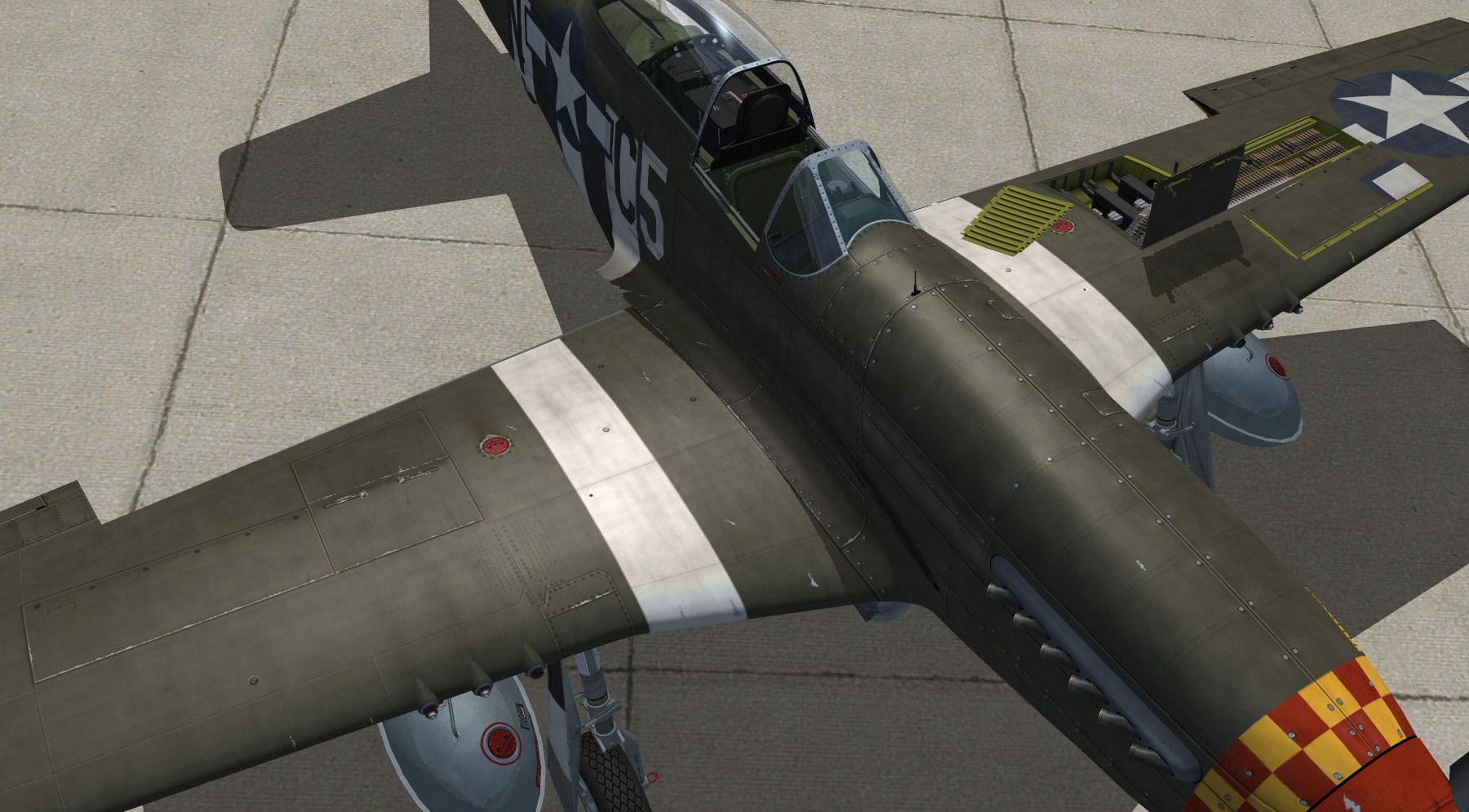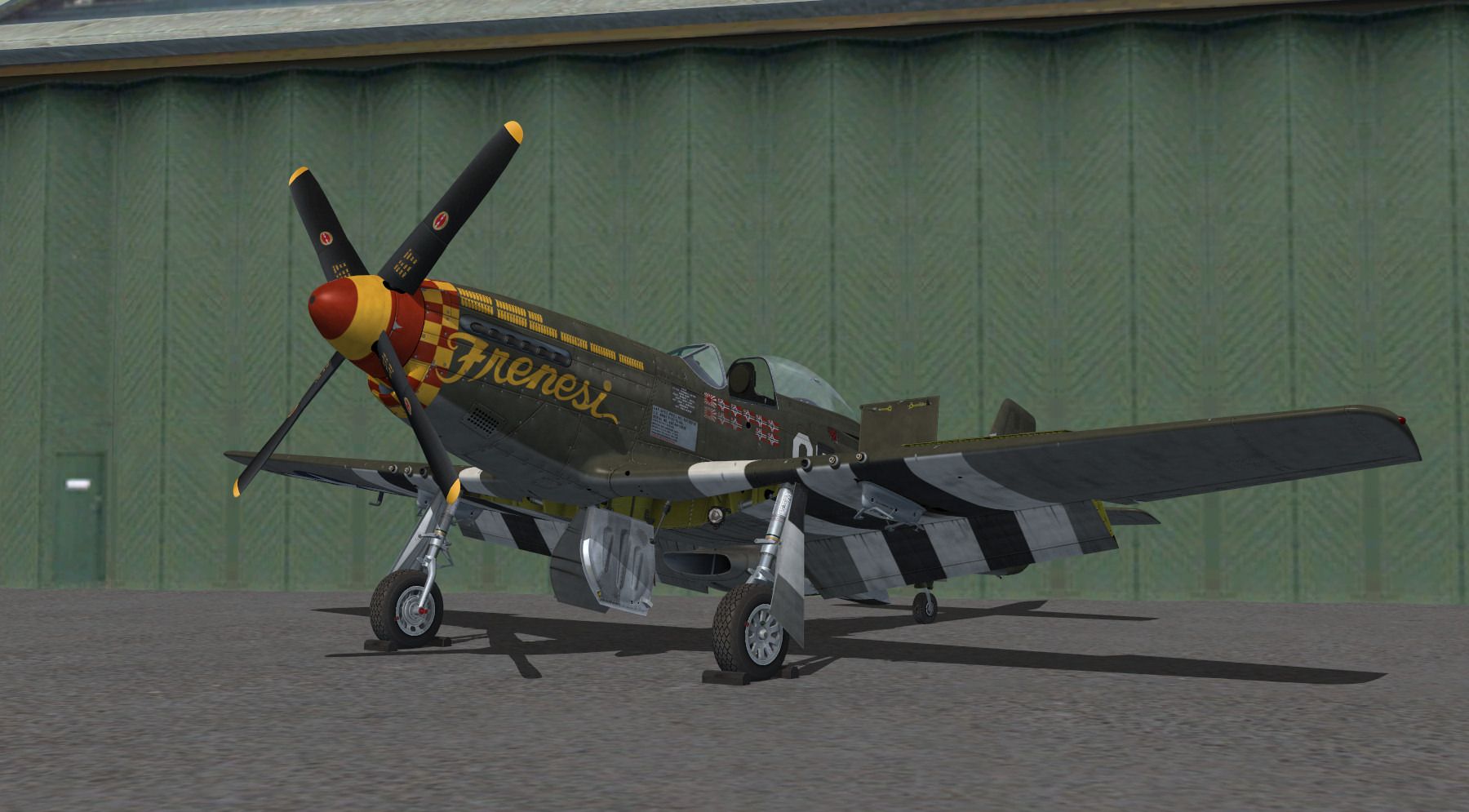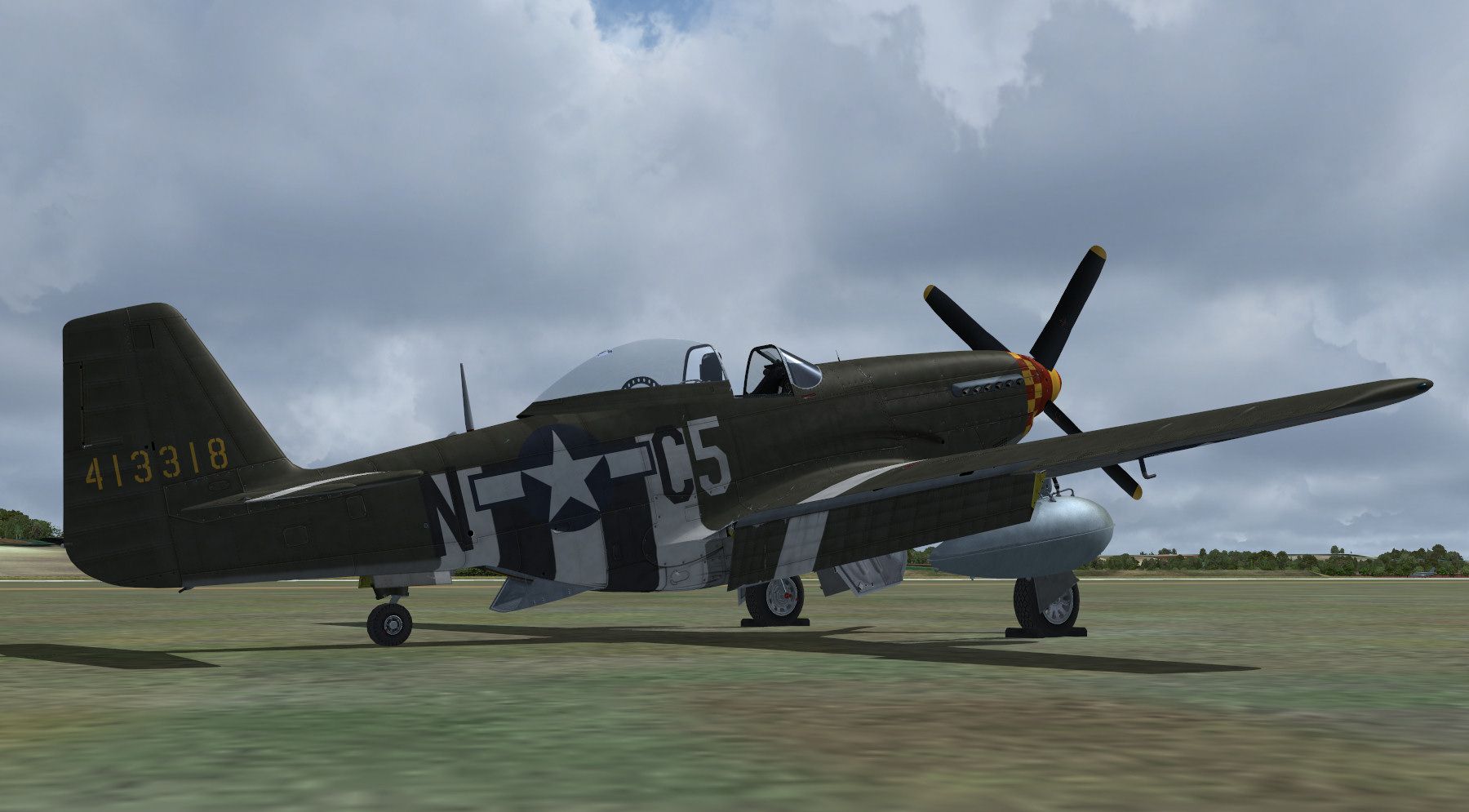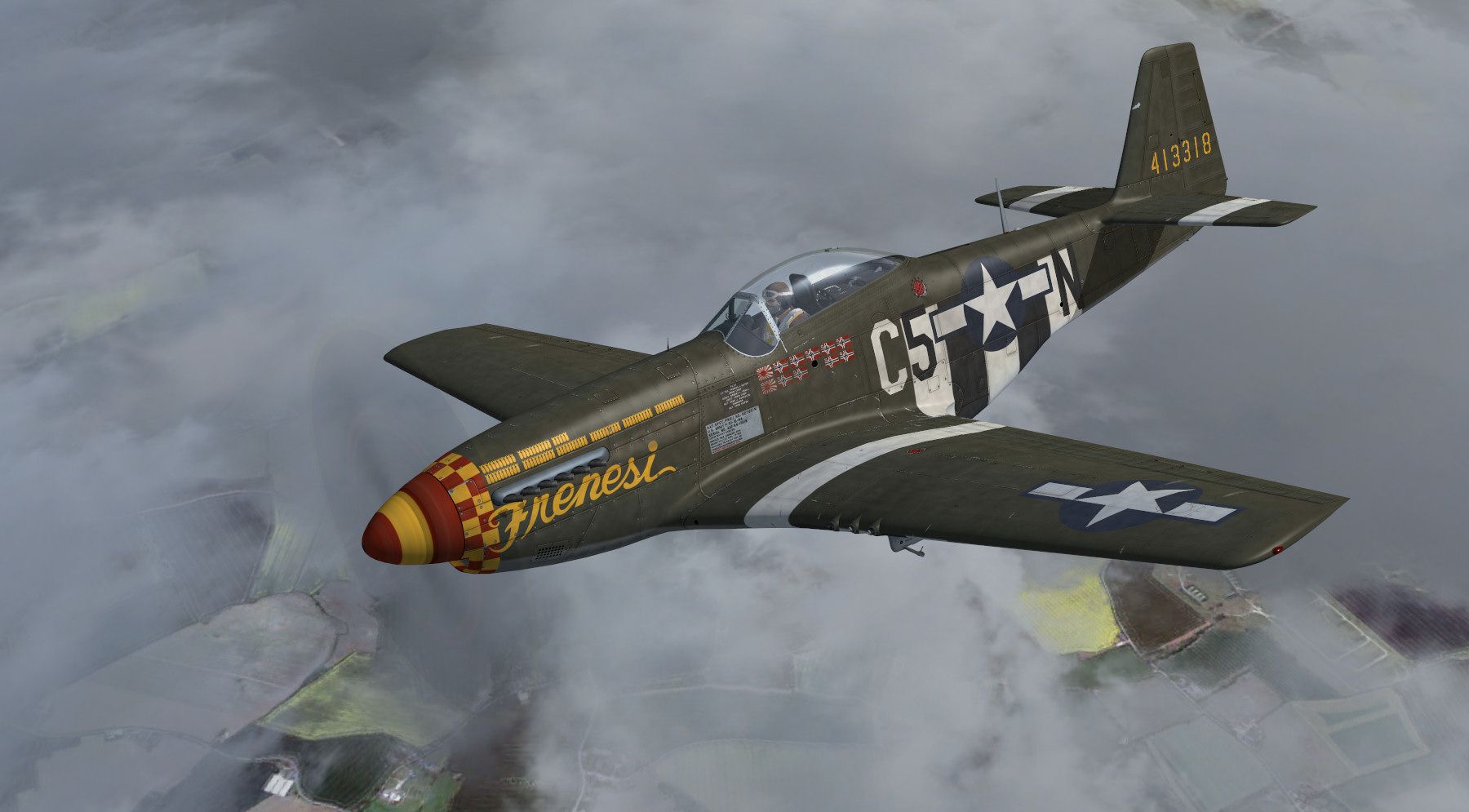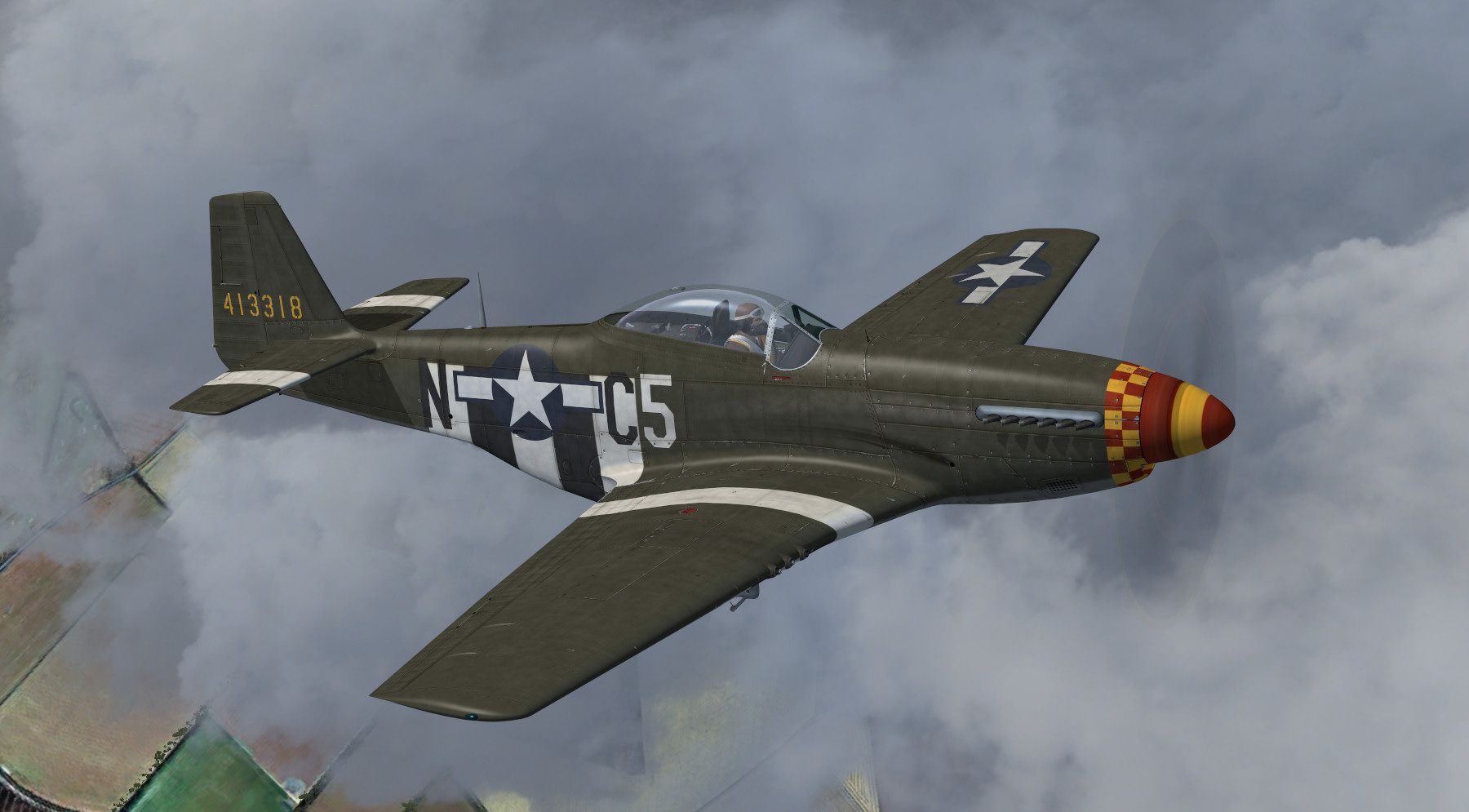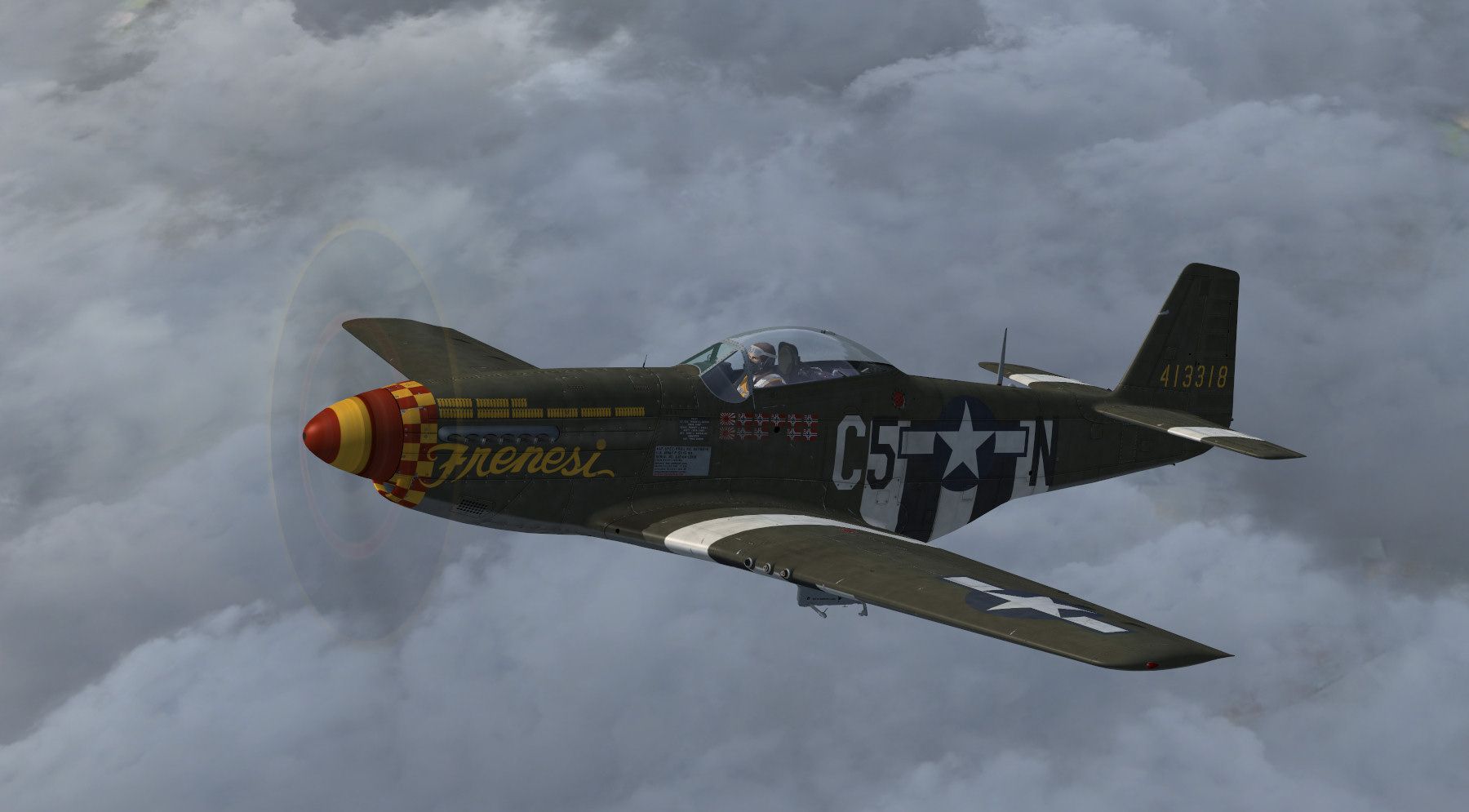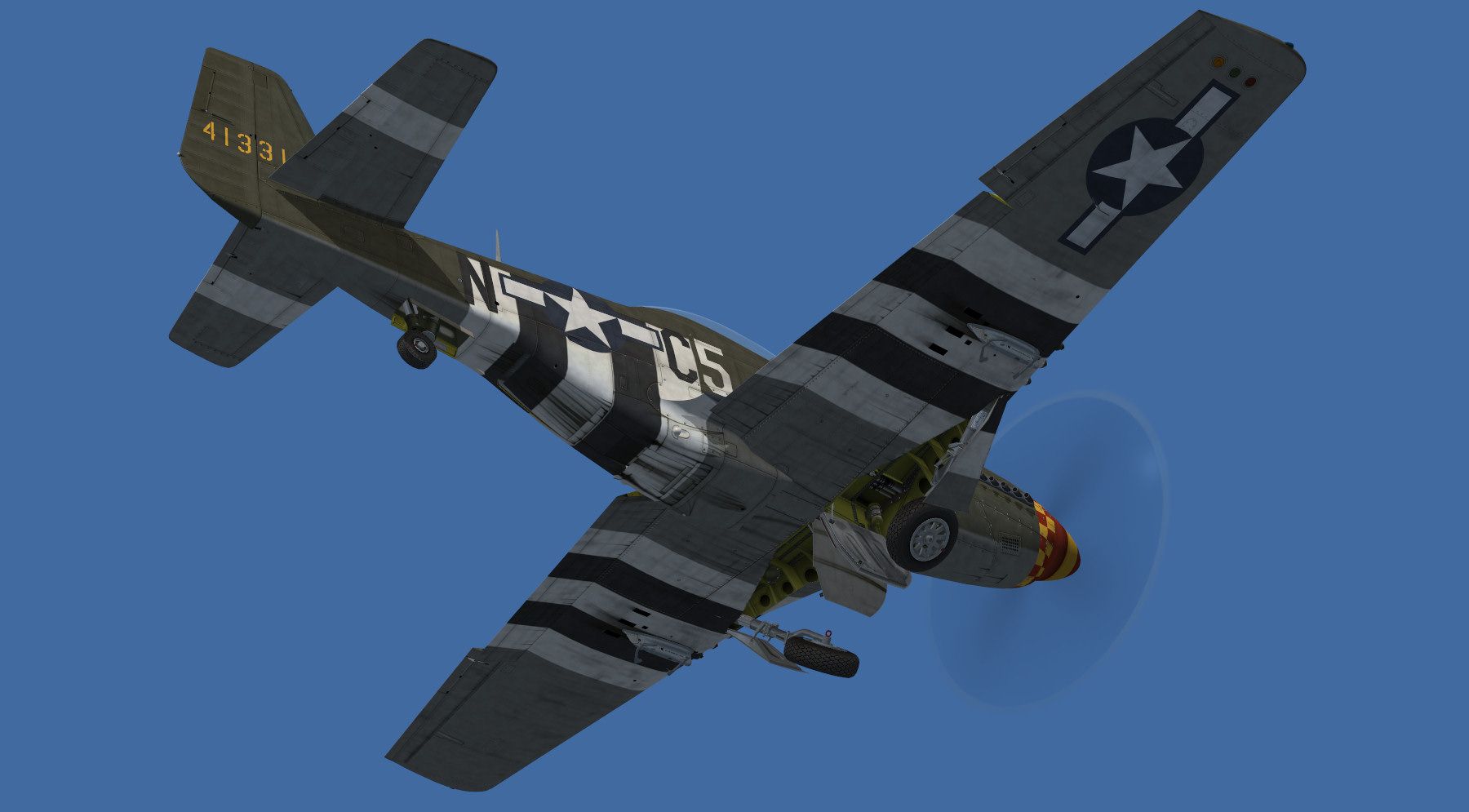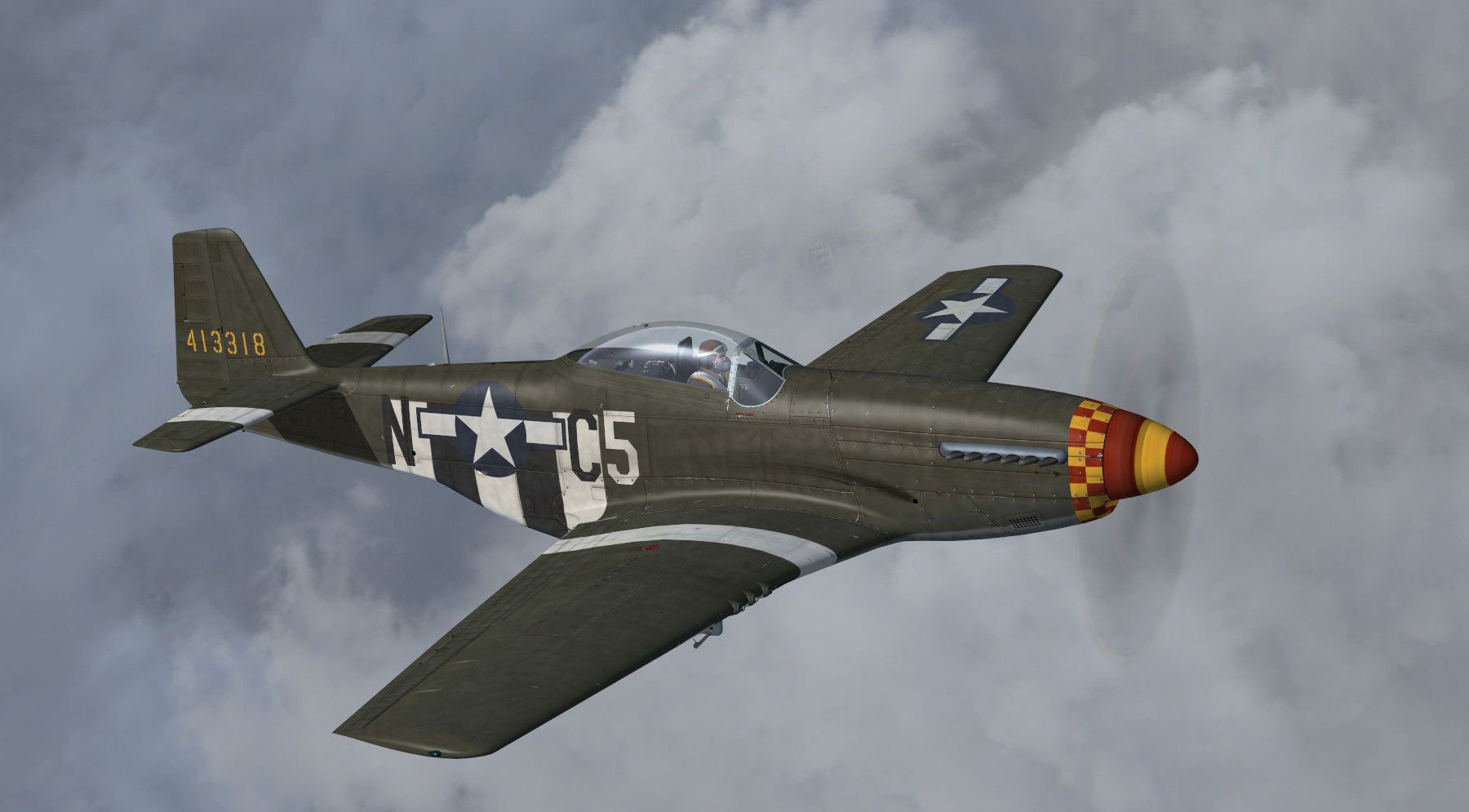-
There seems to be an up tick in Political commentary in recent months. Those of us who are long time members of the site we know that Political and Religious content has been banned for years. Nothing has changed. Please leave all political and religiours commentary out of the fourms.
If you recently joined the forums you were not presented with this restriction in the terms of service. This was due to a conversion error when we went from vBulletin to Xenforo. We have updated our terms of service to reflect these corrections.
Please note any post refering to a politicion will be considered political even if it is intended to be humor. Our experience is these topics have a way of dividing the forums and causing deep resentment amoung members. It is a poison to the community. We apprciate compliance with the rules.
The Staff of SOH
You are using an out of date browser. It may not display this or other websites correctly.
You should upgrade or use an alternative browser.
You should upgrade or use an alternative browser.
"Before They Had Dorsal Fin Fillets"
- Thread starter Bomber_12th
- Start date
Ian Warren
Charter Member
Have photo's off the prototype first batch's without the dorsal fillet then mention the strake was retrofitted to many off these aircraft due directional stability , you can also see the return without the fillet XP-51F in another photo i have .
Bomber_12th
SOH-CM-2025
Nearly 800 P-51D's were produced before the T.O. was introduced (which covered all Merlin-engined P-51's in service at the time).
Bomber_12th
SOH-CM-2025
I'm sorry, as that is not how I want to come across. I've cleaned out my few comments, to prevent further feelings, and I apologize for my original posts. Rwmarth, even though you've removed your post too, I completely agree with your assessment. I think I'm just going to take a bit of a break from this hobby for a while.
Roadburner440
Charter Member 2010
Unfortunately it is very hard to come across all of these tech orders, and which aircraft they were/weren't applied to. I mean now in the Navy we electronically track all such TD's so that all aircraft get upgraded. Back then during the war though not only would it be impossible to have verified, but I am pretty sure they would not have downed a perfectly good and flyable bird to incorporate something like that if it could fly. Looks cleaner without the extra fairing riveted on anyway.
Bomber_12th
SOH-CM-2025
Boy, does this thread seem odd today. I'm very sorry again! I can't help but imagine too, that, only due to my own fault, what some might imagine was said, was much worse than what was actually said - perhaps the attitude behind it was the worse part of it all.
Steve, just to clarify, the intent of this thread wasn't about the T.O., but about trying to reinforce credibility, where it seemed, at least to me, it was trying to be taken away. If there is a slip of the tongue, and something is stated simply because of a lack of knowledge or simply a small bit of memory failure at the moment, that's no problem, but if it is being said in order to add credibility to one's work, and at the same time tries to take credibility away from another's work, that is what I took issue with.
When I stated that nearly 800 P-51D-5-NA's were produced without dorsal fin fillets, that comes from the research I did, and clarified with a number of other well respected Mustang historians/researchers, and not some figure just written in a book somewhere. It comes from having researched (albeit briefly) almost every single P-51D-5-NA produced (serial number by serial number, up the list), photographically. If you know where to find the photos, it isn't all that hard to do. The date at which the T.O. was issued, is known, and this is backed up with photos before this date/time showing all P-51D-5-NA's in their stock configuration. Eventually, starting about September/October you begin to see photos of some of these same aircraft, now configured with dorsal fin fillets. The earliest examples you can find with dorsal fin fillets, are a few of the very last examples manufactured, which were being manufactured during the same time the T.O. was issued. This is why you can't say that all P-51D-5-NA's were manufactured without dorsal fin fillets, but that nearly all were. It was important for me to recognize the fact that, especially by the spring of '45, any P-51D-5-NA still in active service had dorsal fin fillets installed, so that I also have produced/made available with the P-51D-5-NA's, a version with the dorsal fin fillet added (which is also not the same dorsal fin fillet as installed on later P-51D's). You can refute everything I say, but please do the research yourself - it's all there.
Although it seems I'm often the only one that is interested in such things, you'll find in earliest Mustang production, like the P-51D-5-NA, that the elevators were of different construction and covered in fabric. The canopy was of a different design than on any later production models (for spares, the company that produced the canopies for the Dallas production line, supplied canopies to the theatre of operations, and thus a number of P-51D-5-NA's would be, eventually, re-canopied with later canopies). You'll also find by looking in my work, that the armor plate on the early models, was mounted several inches lower than that of on later models, just as it really was. The interior is also about 40% different than the last D's produced - with the cockpit evolving the most, between P-51D-5-NA and P-51D-10-NA production, but also continuing to evolve and change with every production block.
This is what they looked like, and operated as, in the thick of combat in the summer of 1944, from D-Day and onwards. Everything else was developed from there, part by part, assembly by assembly, with a numerous amount of production blocks as a result, due to constant changes and developments over the aircraft's production and service life. The equipment they had in them during WWII, wasn't the same they had in them post-WWII (especially post-1948 - ANG and USAF). They never advanced to the stages that you see in many representations, until after WWII had already nearly come to a close, and they were manufactured too late to see action in that form.
Steve, just to clarify, the intent of this thread wasn't about the T.O., but about trying to reinforce credibility, where it seemed, at least to me, it was trying to be taken away. If there is a slip of the tongue, and something is stated simply because of a lack of knowledge or simply a small bit of memory failure at the moment, that's no problem, but if it is being said in order to add credibility to one's work, and at the same time tries to take credibility away from another's work, that is what I took issue with.
When I stated that nearly 800 P-51D-5-NA's were produced without dorsal fin fillets, that comes from the research I did, and clarified with a number of other well respected Mustang historians/researchers, and not some figure just written in a book somewhere. It comes from having researched (albeit briefly) almost every single P-51D-5-NA produced (serial number by serial number, up the list), photographically. If you know where to find the photos, it isn't all that hard to do. The date at which the T.O. was issued, is known, and this is backed up with photos before this date/time showing all P-51D-5-NA's in their stock configuration. Eventually, starting about September/October you begin to see photos of some of these same aircraft, now configured with dorsal fin fillets. The earliest examples you can find with dorsal fin fillets, are a few of the very last examples manufactured, which were being manufactured during the same time the T.O. was issued. This is why you can't say that all P-51D-5-NA's were manufactured without dorsal fin fillets, but that nearly all were. It was important for me to recognize the fact that, especially by the spring of '45, any P-51D-5-NA still in active service had dorsal fin fillets installed, so that I also have produced/made available with the P-51D-5-NA's, a version with the dorsal fin fillet added (which is also not the same dorsal fin fillet as installed on later P-51D's). You can refute everything I say, but please do the research yourself - it's all there.
Although it seems I'm often the only one that is interested in such things, you'll find in earliest Mustang production, like the P-51D-5-NA, that the elevators were of different construction and covered in fabric. The canopy was of a different design than on any later production models (for spares, the company that produced the canopies for the Dallas production line, supplied canopies to the theatre of operations, and thus a number of P-51D-5-NA's would be, eventually, re-canopied with later canopies). You'll also find by looking in my work, that the armor plate on the early models, was mounted several inches lower than that of on later models, just as it really was. The interior is also about 40% different than the last D's produced - with the cockpit evolving the most, between P-51D-5-NA and P-51D-10-NA production, but also continuing to evolve and change with every production block.
This is what they looked like, and operated as, in the thick of combat in the summer of 1944, from D-Day and onwards. Everything else was developed from there, part by part, assembly by assembly, with a numerous amount of production blocks as a result, due to constant changes and developments over the aircraft's production and service life. The equipment they had in them during WWII, wasn't the same they had in them post-WWII (especially post-1948 - ANG and USAF). They never advanced to the stages that you see in many representations, until after WWII had already nearly come to a close, and they were manufactured too late to see action in that form.
Bomber_12th
SOH-CM-2025
By the way, I'm not sure how many of seen these. These aircraft were originally manufactured as stock P-51D-5-NA's, but were later modified for specified roles.
This one, which is quite unusual, was taken after manufacture, and modified as an F-6D variant (and still retains its characteristic P-51D-5-NA canopy, low-mounted armor plate, and serial number). The aircraft has also been updated with the early dorsal fin fillet.

Furthermore, a couple of D-5-NA's were retained by NACA for testing. These were some of the first to have the NACA-designed taller tail added, which worked to added more directional stability during the high-speed dive tests.
This one still flies today, having been modified post-war as one of the first Cavalier Mk.II's: http://mustangsmustangs.net/p-51/?survivors/serial/44-13257
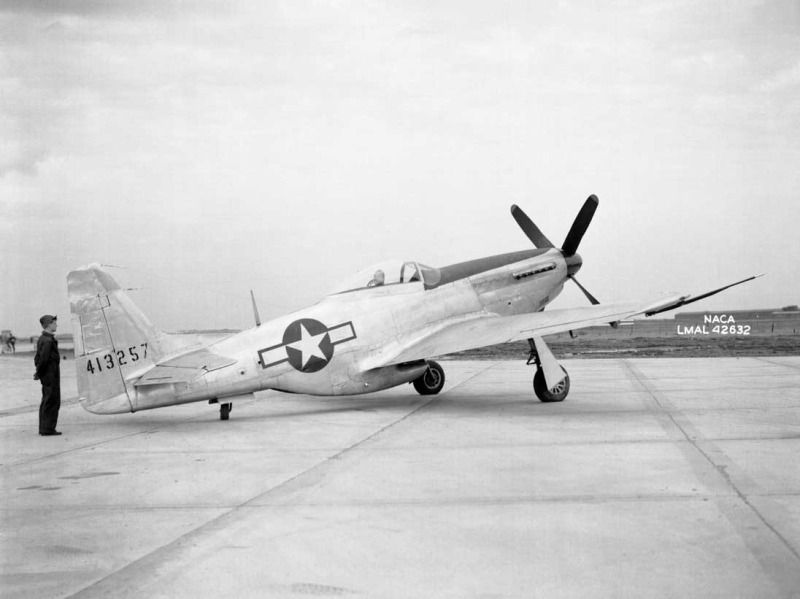
Note the metalized rudder added on this example. Also note the decal on the tail, which I had as my avatar for quite a while.

This one, which is quite unusual, was taken after manufacture, and modified as an F-6D variant (and still retains its characteristic P-51D-5-NA canopy, low-mounted armor plate, and serial number). The aircraft has also been updated with the early dorsal fin fillet.

Furthermore, a couple of D-5-NA's were retained by NACA for testing. These were some of the first to have the NACA-designed taller tail added, which worked to added more directional stability during the high-speed dive tests.
This one still flies today, having been modified post-war as one of the first Cavalier Mk.II's: http://mustangsmustangs.net/p-51/?survivors/serial/44-13257

Note the metalized rudder added on this example. Also note the decal on the tail, which I had as my avatar for quite a while.

Roadburner440
Charter Member 2010
Certainly interesting. Never knew they tried putting cameras in them. It really is interesting all of the things that they thought of back then. Especially since aviation in that form was relatively new. It wasn't to long before the war in the 30's that they started getting away from bi-planes. Go from that to mounting camera pods in the aft end of a P-51, or even that metallic flight control surfaces were an addition. The place I volunteer at has a lot of aircraft from the wars, and it is certaintly amazing to me that they had aluminum fuselages/skins and fabric covered flight control surfaces. Probably easier to assemble as small of a part of the airframe as they were, and with trying to save as much metal as possible.
CP1207
Charter Member 2016
Bomber_12th
SOH-CM-2025
There has been some suggestion that the F-6 variant P-51D-5-NA above was possibly one of the prototypes for the F-6 production, though I don't know. That was just one of a few different F-6D/K configurations. With the large upper-most camera port installed, the control cables running to the tail had to be re-routed, and this was something out of the capacity to be handled in the field, so it is safe to say that the work on that one was handled by NAA. There were some field-modded P-51D's though too, converted to F-6 models, but they didn't have that upper-most large camera port, and thus also didn't have the control cables re-routed. There is a P-51D-20-NA currently under re-restoration, that was a combat vet in WWII, and it has remnants of field-added F-6D modifications.
Although some F-6D's, such as that one pictured above, had up to three different camera ports, there was only one camera installed at any given time, with two different camera types to choose from. The larger of the two would either be mounted to look through the upper-most camera port, or positioned looking straight down, through the bottom-facing port. The smaller camera option would be mounted in the lower-side port.
With Warbirdsim's P-51D "Restored Part 1", I had some good experience researching the F-6D, in order to reproduce the restored "Lil' Margaret" (due for an update, along with the rest of the Restored Part 1 and 2 examples). In the case of "Lil' Margaret", it wasn't restored with the bottom-facing port.
Here are a couple of photos I took after meeting up with Butch Schroeder in 2010. On "Lil' Margaret", it is fitted with the smaller camera.
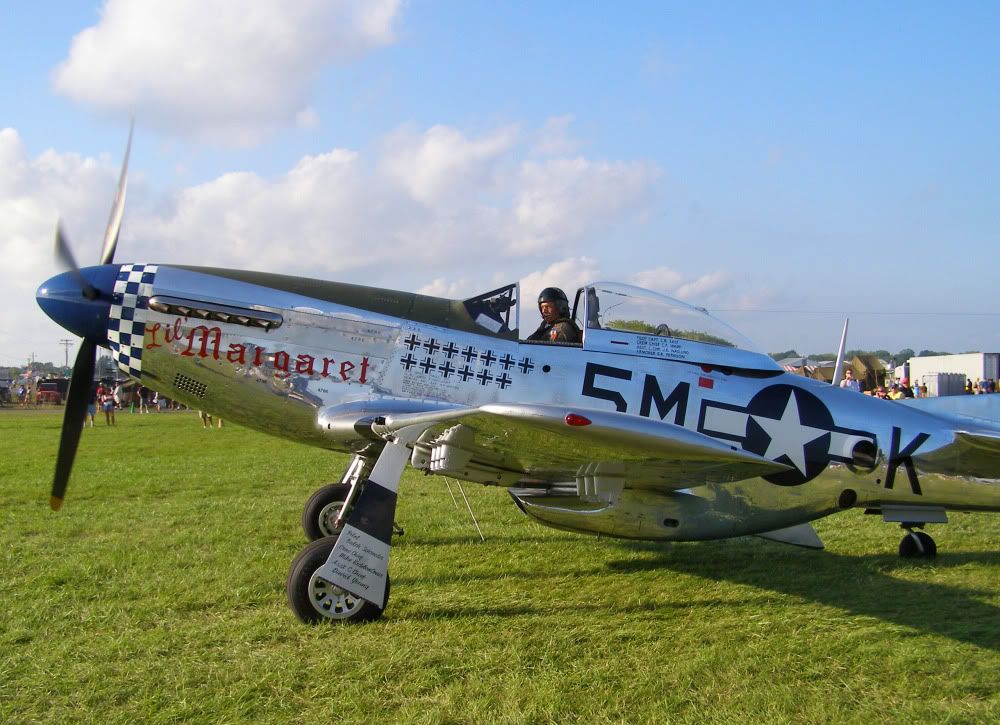
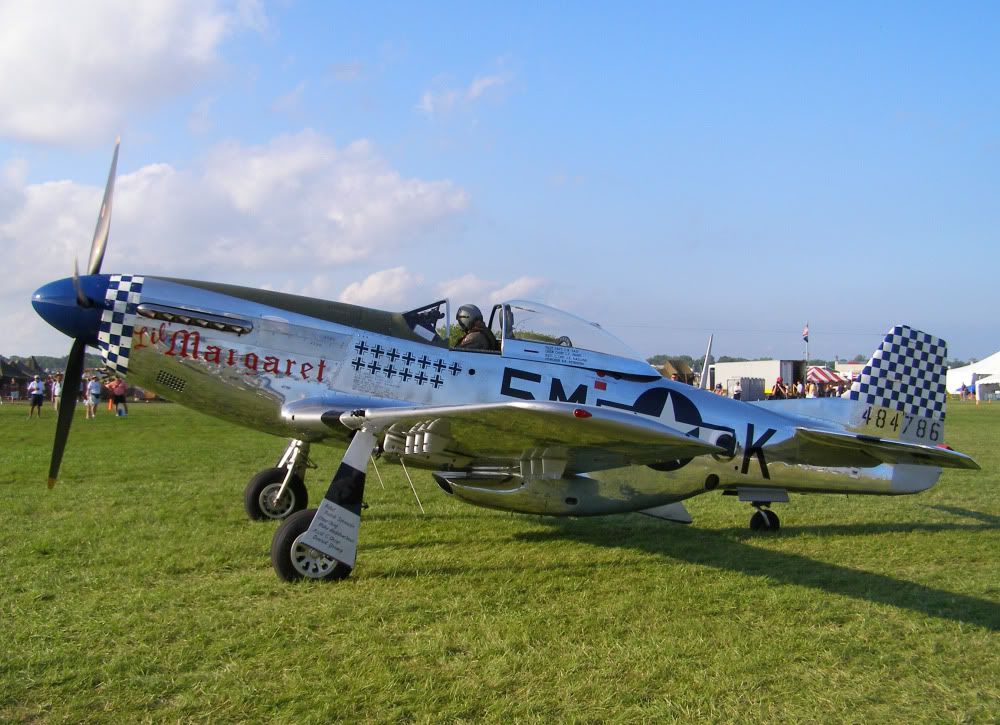
Here you can see the camera control unit, mounted on the left floorboard, as well as the camera control switch panel mounted in front of the engine controls. You can also see the three cross-hairs, painted on the canopy, that correspond to the alignment marks painted on the left wing.
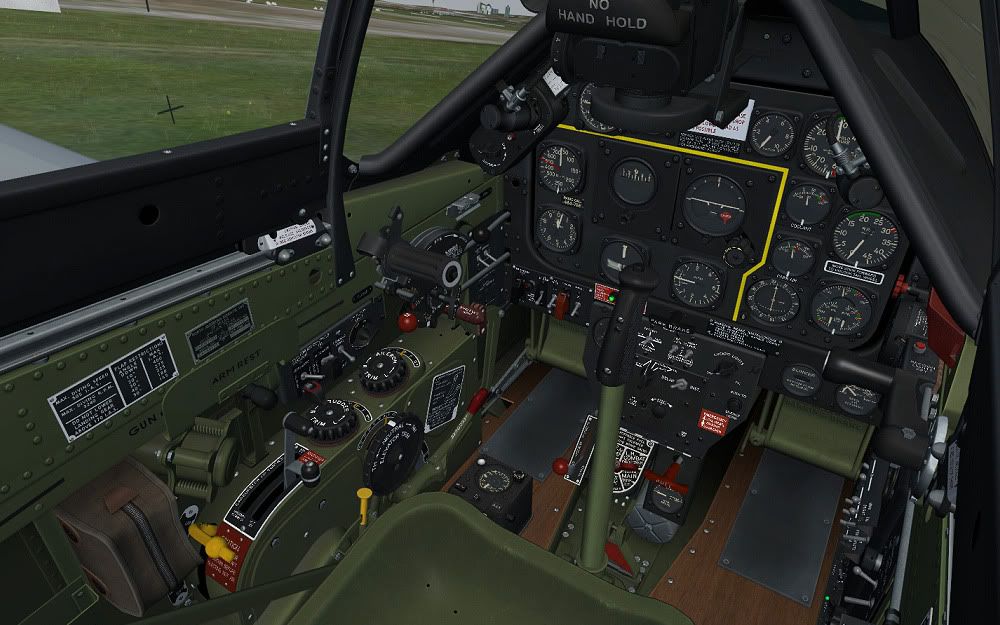

Although some F-6D's, such as that one pictured above, had up to three different camera ports, there was only one camera installed at any given time, with two different camera types to choose from. The larger of the two would either be mounted to look through the upper-most camera port, or positioned looking straight down, through the bottom-facing port. The smaller camera option would be mounted in the lower-side port.
With Warbirdsim's P-51D "Restored Part 1", I had some good experience researching the F-6D, in order to reproduce the restored "Lil' Margaret" (due for an update, along with the rest of the Restored Part 1 and 2 examples). In the case of "Lil' Margaret", it wasn't restored with the bottom-facing port.
Here are a couple of photos I took after meeting up with Butch Schroeder in 2010. On "Lil' Margaret", it is fitted with the smaller camera.


Here you can see the camera control unit, mounted on the left floorboard, as well as the camera control switch panel mounted in front of the engine controls. You can also see the three cross-hairs, painted on the canopy, that correspond to the alignment marks painted on the left wing.


Bomber_12th
SOH-CM-2025
hey John, what pack is that P-51 in?
It's included with the "Little Friends II" product, which covers just the unique P-51D-5-NA variants.
The P-51D-5-NA has sometimes been referred to as "shark-like", and I love that about them. I love showing off a perfect side-view. : )

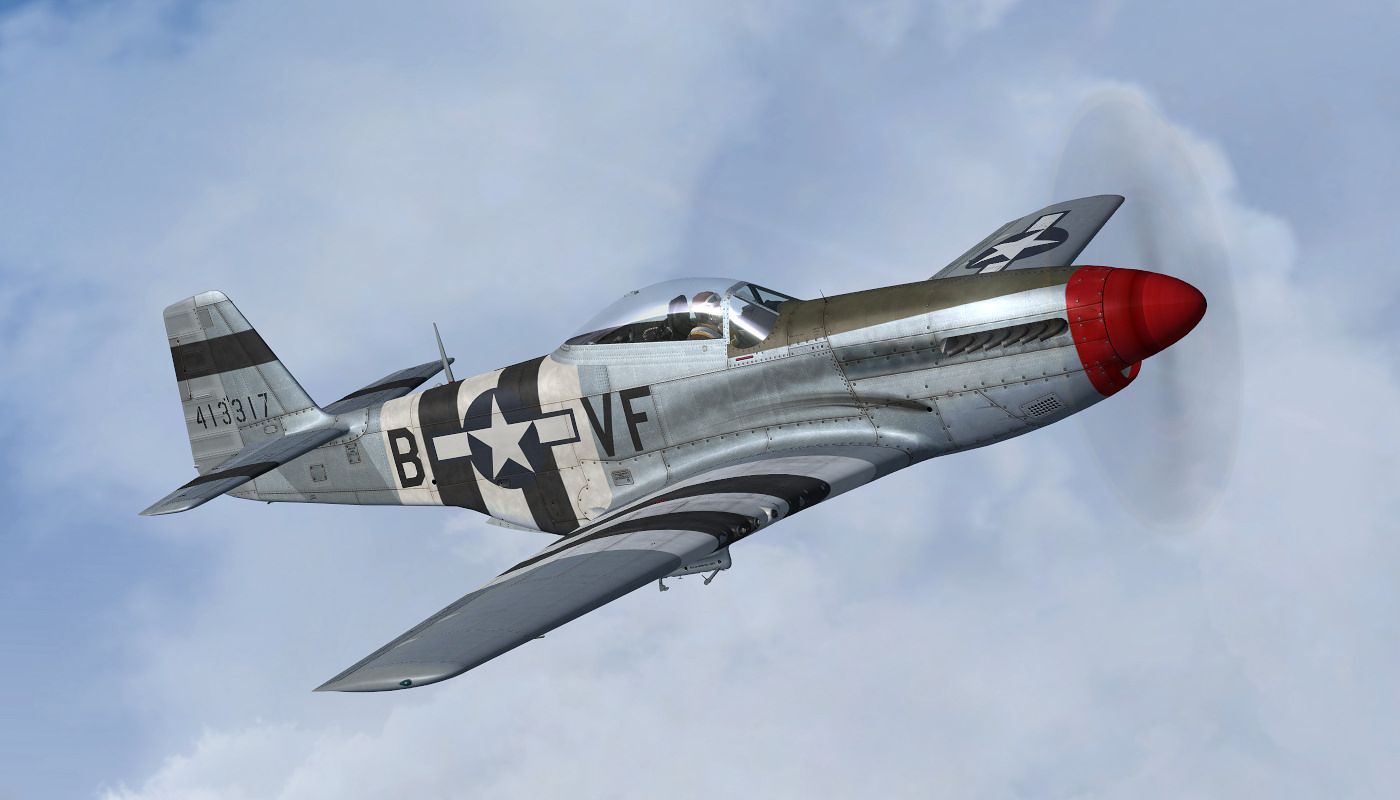
Bomber_12th
SOH-CM-2025
Some more "fillet-less" action. : )




Bomber_12th
SOH-CM-2025
Canopies
As with many things, someone's first design/development is not always as good as it could be. That was discovered with the P-51D canopy. When first designed, the largest section of the canopy was positioned right near to the middle, which was actually behind the pilot's head. It was also not bulged out on the sides, something that the Malcolm hood canopy was (which actually offered better visibility). In very late P-51D-5-NA production, and incorprated from day 1 on P-51D-10-NA production, the canopy was redesigned, with the tallest portion of the canopy now positioned over the pilot's head, and the sides bulged out. It is this design which became the most used/manufactured. At the Dallas NAA production plant, late in the war, they sourced their own company to produce the canopies for their production. Although they used the same drawings as the Inglewood produced P-51D's, the canopies were manufactured using a different process, which resulted in the canopies taking on a bit of a different shape to them, that I tend to refer to as "slick back".
Here are three comparison screenshots showing the three different canopy types as mentioned.
P-51D-5-NA - First generation canopy
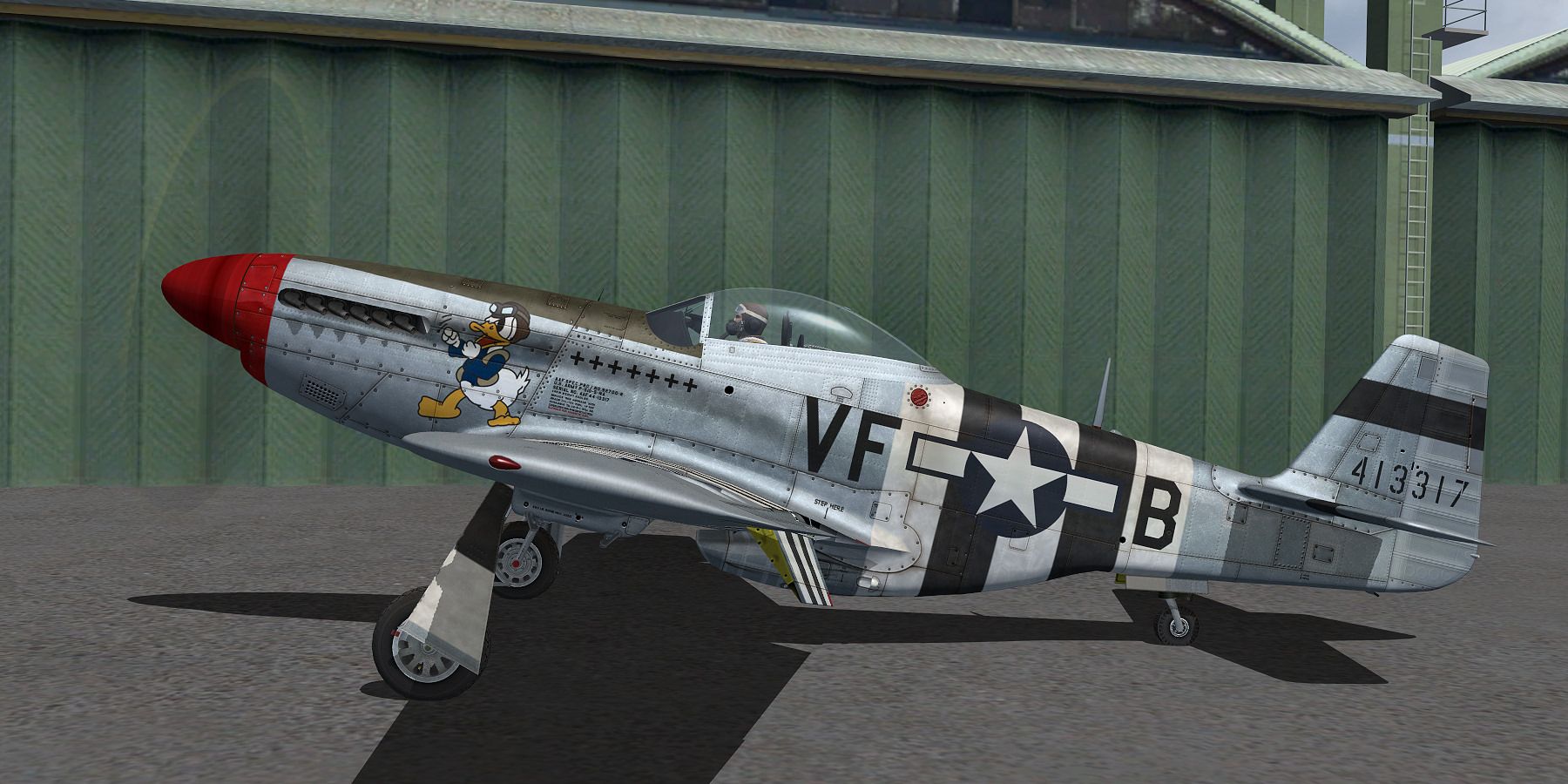
P-51D-20-NA - "California Canopy"
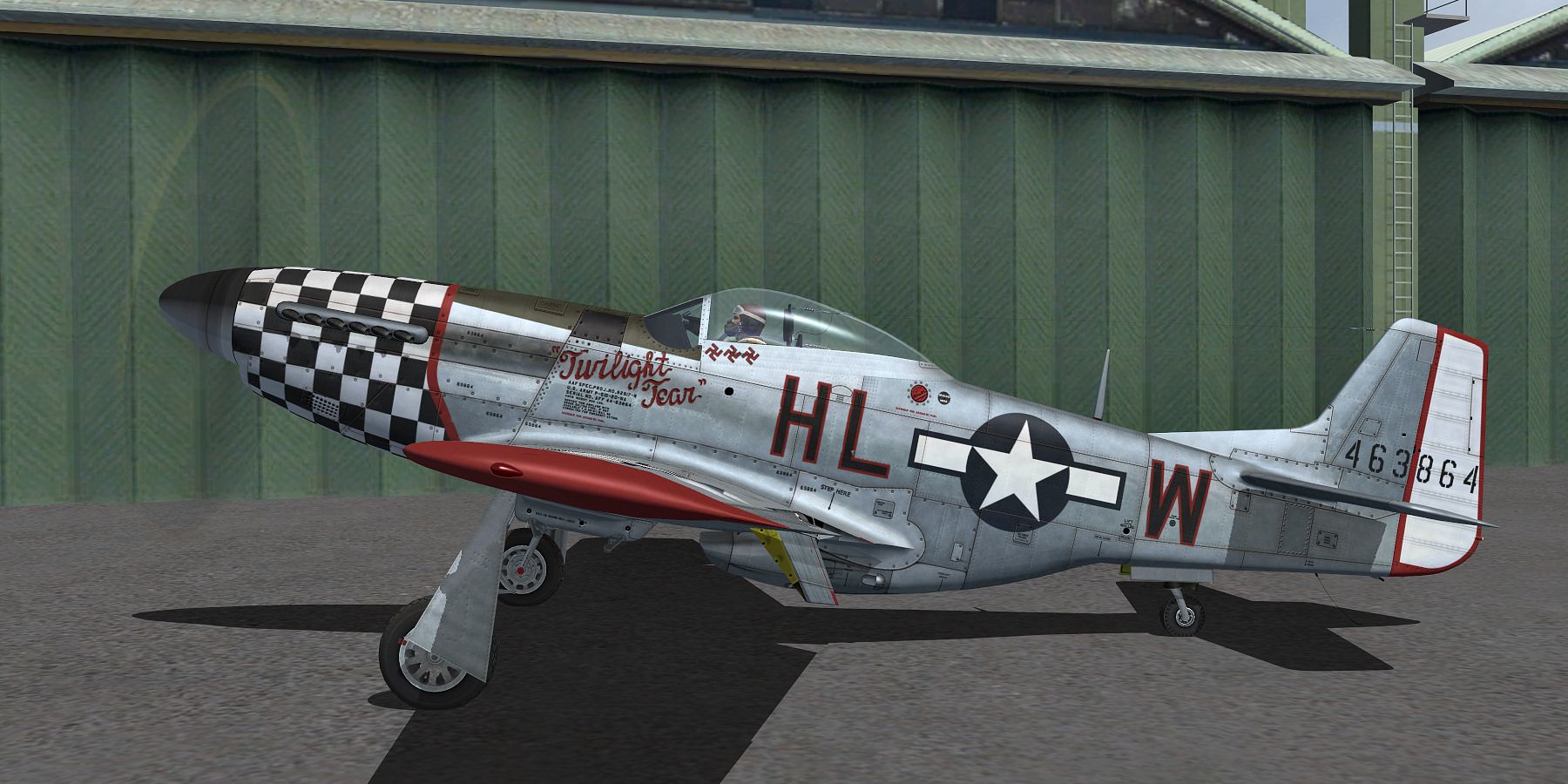
P-51K-15-NT - "Dallas Canopy"
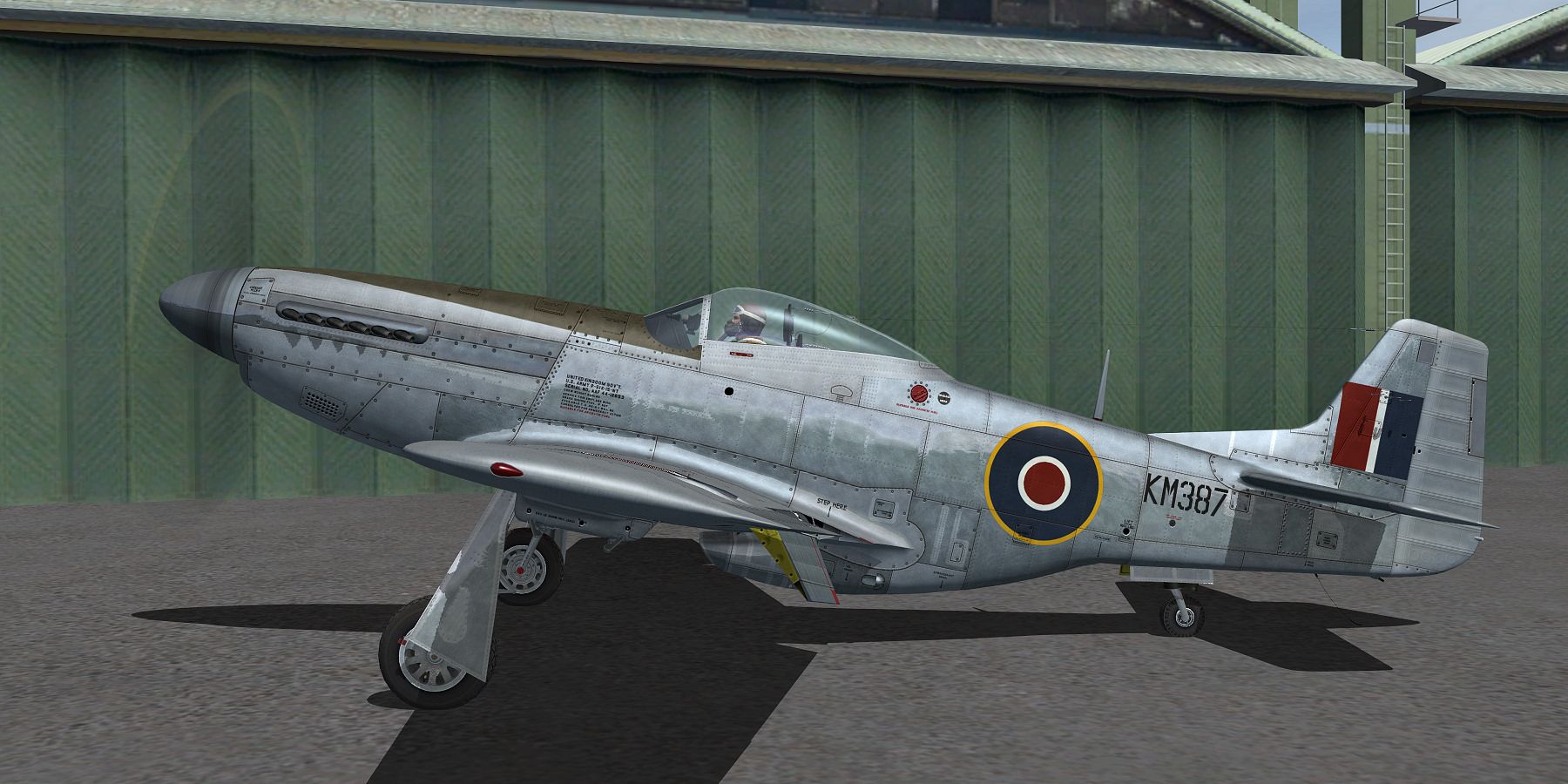
As with many things, someone's first design/development is not always as good as it could be. That was discovered with the P-51D canopy. When first designed, the largest section of the canopy was positioned right near to the middle, which was actually behind the pilot's head. It was also not bulged out on the sides, something that the Malcolm hood canopy was (which actually offered better visibility). In very late P-51D-5-NA production, and incorprated from day 1 on P-51D-10-NA production, the canopy was redesigned, with the tallest portion of the canopy now positioned over the pilot's head, and the sides bulged out. It is this design which became the most used/manufactured. At the Dallas NAA production plant, late in the war, they sourced their own company to produce the canopies for their production. Although they used the same drawings as the Inglewood produced P-51D's, the canopies were manufactured using a different process, which resulted in the canopies taking on a bit of a different shape to them, that I tend to refer to as "slick back".
Here are three comparison screenshots showing the three different canopy types as mentioned.
P-51D-5-NA - First generation canopy

P-51D-20-NA - "California Canopy"

P-51K-15-NT - "Dallas Canopy"



